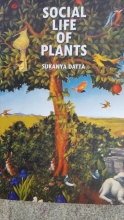
This book offers a startling new perspective on the world of plants, presenting an atypical point of view that ignites a sense of wonder as it explores the plant world.
For example, the exclusively nector-feeding honeyeaters, like flowerpeckers also pollinate the flowers they feed on. Along with parrots, the honeyeaters are responsible for the pollination of most of the flowering trees and shrubs in Australia. The close relationship between the birds and the flowers cannot be overestimated. Hummingbirds, orioles, shrikes, weaverbirds, sunbirds, honeyeaters, honeycreepers and other birds play a stellar role in pollination. Some flowers seem to be perfectly adapted for pollination by birds. For example, the bird of paradise flower.
The colours of the flowers serve to attract the birds to the copious supply of nectar at the base of the corolla’s tubes. The nectar of the bird-pollinated flowers is much weaker than that of insect-pollinated flowers. Researchers are of the opinion that insects are probably not attracted at all to bird-flowers.
Thus, plants form alliances, may be even friendships, with other plants and with birds and animals too. They wage war against enemies, using chemicals to delineate territory which they defend ferociously. They employ mercenaries. They use subtle strategies for survival, recruiting agents to suit their purpose. Secrets of plant life as uncovered by modern science reveal that plants lead lives far from being silently mundane. The word “extraordinary” would sum it up aptly, as explained in this book.
